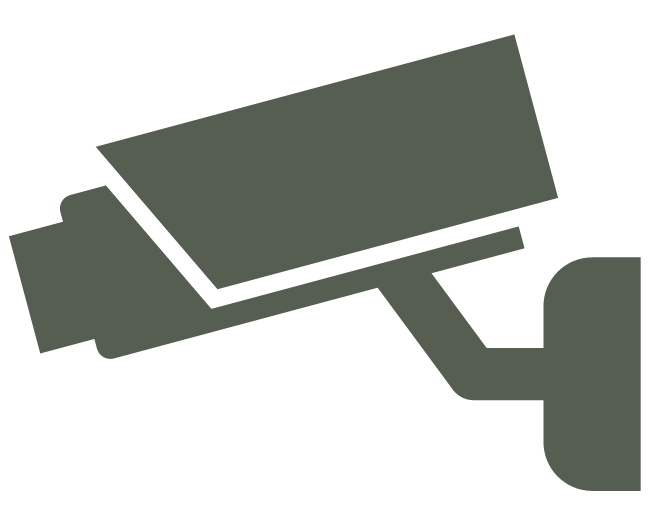September 20, 2022
7 Strategies for Enhancing Ballot Drop Box Security
The guide is available for download:
Voters like ballot drop boxes. In jurisdictions where vote-by-mail is prevalent, as many as 80 percent of voters choose to return their ballot at a ballot drop box. In particular, where ballots must be received by election officials on Election Day or earlier, drop boxes have a critical operational function.
As the use and popularity of drop boxes increases, election administrators must take special care to ensure the security of those drop boxes. The strategies below can be used to enhance the physical security of drop boxes in your jurisdiction.
Strategies
- Post local electioneering rules, regulations, and other important information on or near drop boxes
- Prepare local law enforcement to respond to incidents
- Use ballot drop boxes with built-in physical security features
- Establish ballot drop boxes in secure locations
- Train and prepare your ballot collection teams
- Invest in the right tools and equipment
- Monitor ballot drop boxes at all times
Strategy 1: Post local electioneering rules, regulations, and other important information on or near drop boxes
Important information to post using signs, magnets or stickers, might include:
-
A call-in number on the ballot drop box for reporting issues.
-
A notice that ballot drop boxes are monitored by 24/7 video or personnel surveillance.
-
A notice that ballot drop boxes are monitored regularly by law enforcement.
-
Statutes and penalties for election interference or voter obstruction or harassment.
-
The period during which drop boxes are available.
Pro Tip: Provide all of this information to the media to increase awareness.


The Elections Group can create signage for your jurisdiction through its Communications Resource Desk. Contact us to request assistance.
Strategy 2: Prepare local law enforcement to respond to incidents
Engage with local law enforcement early and often to ensure that they are prepared to respond to ballot drop box incidents. Follow these tips to engage with local law enforcement:
-
Contact local law enforcement officials.
-
Educate them on your jurisdiction’s rules and regulations regarding electioneering and voter intimidation near drop boxes.
-
Share information about the location of drop boxes and all security measures that you already have in place to aid local law enforcement in protecting drop boxes.
Pro Tip: The Committee for Safe and Secure Elections has published Five Steps For Safer Elections which detailed guidance that can help engagement with local law enforcement on this and other topics.
Strategy 3: Use ballot drop boxes with built-in physical security features
The best ballot drop boxes have built-in security features to prevent tampering and ensure that only ballots are inserted into the box. These built-in features include:
-
A lock and a tamper-evident seal. Only an election official and a designated ballot retriever should have access to the keys and/or combination of the lock.
-
Openings that will not accept items larger than a ballot (approximately ¼ inch opening) or allow ballots to be tampered with or removed. Existing drop boxes can be retrofitted to provide for this.
-
A design that prevents ballot overflow.
-
For staffed drop boxes, a base that is securely fastened to a stationary surface or immovable object.
-
You should regularly inspect ballot drop boxes and ballot insert openings prior to and throughout voting periods. Ensure that these openings work correctly and have not been tampered with.
-
Any time that a staffed drop box is not in use, it should be secured in a locked room and sealed with a tamper-evident seal.
-
Invest in security measures to protect or conceal the locking mechanism.
-
The box itself should be made of heavy duty materials. A solid, welded box designed for receiving ballots is preferable to an assembled box.

Strategy 4: Establish ballot drop boxes in secure locations
When choosing a ballot drop box location, you should consider several factors including voter convenience and population concentration. Security is also an important factor when choosing drop box locations. Secure locations have the following features:
-
They are well-lit and highly-trafficked.
-
They already have security features like video surveillance equipment and/or a law enforcement presence.
-
If possible, they are located near government buildings like libraries, which often have their own security presence.
-
In the event that a drop box is in a location without these features, consider installing bollards around the perimeter of the drop box.
-
Unstaffed, outdoor boxes should be permanently or semi-permanently secured into concrete.
Strategy 5: Train and prepare your ballot collection teams
Well trained, professional ballot collection teams are critical to maintaining ballot drop box security. Ensure that your ballot collection teams are following these best practices:
-
Hire enough temporary workers to staff ballot collection teams, based on the number of drop boxes used in your jurisdiction.
-
Use the buddy system method of ballot pick-up. Always have at least two team members working together to collect ballots, preferably bipartisan pairs.
-
Instruct ballot collection teams to never touch contaminated ballots. In the unlikely event of contaminated ballots, your team should immediately report the incident.
-
Require chain of custody paperwork be completed during collection at each drop box.
-
Schedule regular and well-timed ballot pickups. This ensures a fewer number of ballots are left in drop boxes overnight.
-
On Election Night, station a bipartisan ballot collection team at each drop box 15 minutes before the polls close, to ensure secure retrieval of ballots.
-
Train staff on rules of engagement with observers and use of de-escalation strategies.

Strategy 6: Invest in the right tools and equipment
Ensure your ballot collection teams have the tools they need to succeed and stay safe. This includes:
-
PPE (especially disposable gloves).
-
Large ziploc bags to handle and isolate contaminated ballots.
-
Government vehicles with official logos such as county public works vehicles. Alternatively, you can purchase magnetic signs customized with your official logo that can be put on the vehicles used by collection teams.
-
Badges or vests that readily identify teams as designated ballot retrievers.
-
FAQ style handouts about ballot drop boxes that can be distributed or shown to concerned observers.
-
Incident reporting documentation and protocols, including how to handle contaminated ballots.
Strategy 7: Monitor ballot drop boxes at all times
Monitoring drop boxes can prevent security breaches and ensure a quick response to any incidents. Monitoring best practices may include:
-
Ensuring that permanent, 24/7 drop boxes are monitored by video surveillance.
-
Ensuring temporary drop boxes are staffed while in use.
-
Assigning a rover to help monitor and perform security checks on drop boxes throughout the day (e.g. Door locked? Seals intact? Evidence of box alteration or damage?).
-
Ask local law enforcement to patrol near drop boxes regularly or contract with private security personnel.
Pro Tip: Vary the time a rover or security personnel arrives at each location so that observable patterns do not develop.




